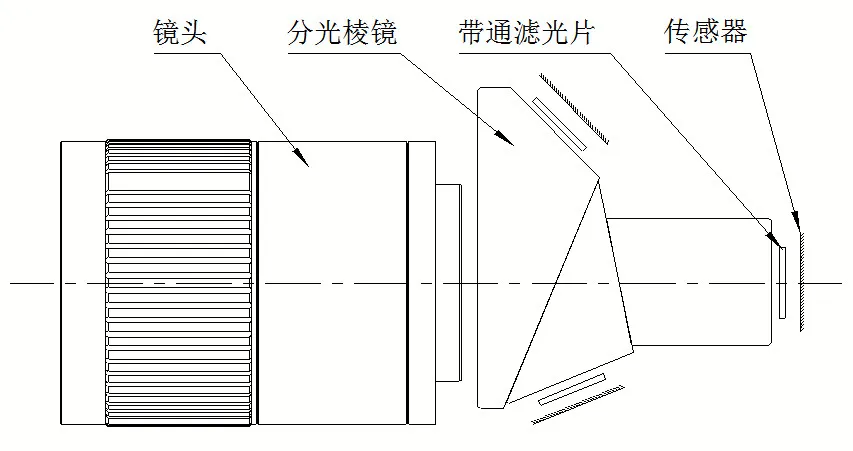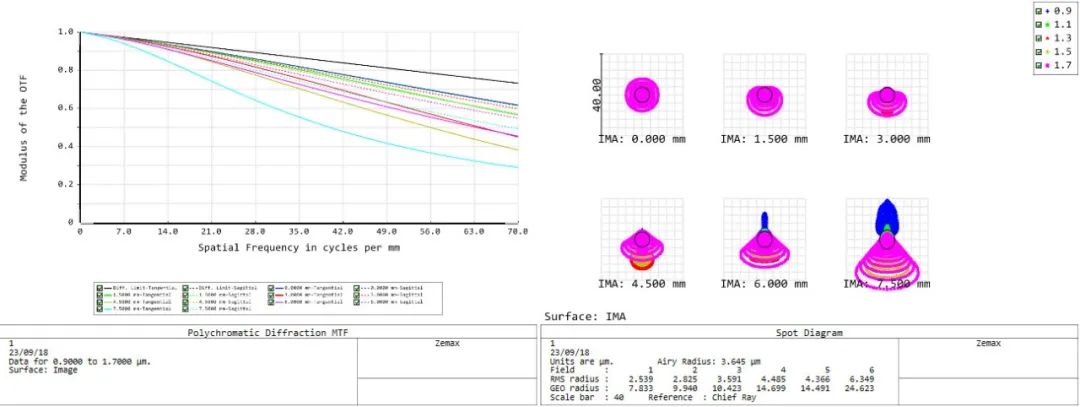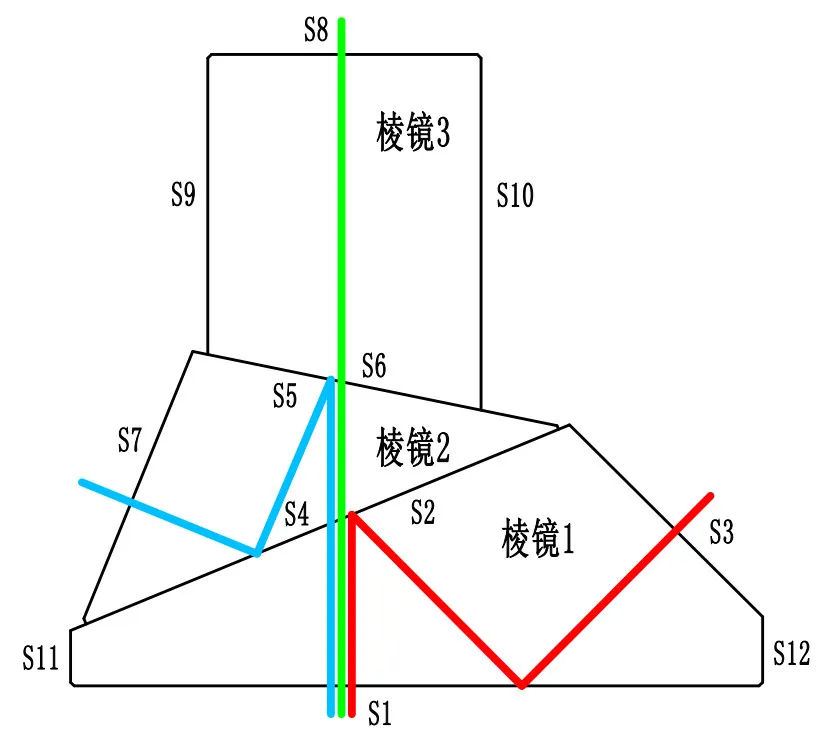
[Products and Technology] Three-sensor short-wave infrared camera using prism light splitting
2024-03-31
[Products and Technology] Three-sensor short-wave infrared camera using prism light splitting
Li Yuhang FOCtek
The short-wave infrared band (SWIR for short, usually refers to light with a wavelength of 0.9~1.7μm) can present many images that cannot be observed by the human eye and has a wide range of applications in the field of industrial sorting. For example, waste plastics, nut shells, tea leaves, grains and other objects of different types and qualities have no obvious appearance difference under visible light, but they show different absorption and transmission characteristics in different spectra of the short-wave infrared band. After being viewed by an infrared camera, After shooting and receiving different response signals, the attributes of the product can be screened using the results of previous research on the spectral images of the corresponding characteristics.
Since objects have different spectral response characteristics at different wavelengths in the short-wave infrared band, in some sorting scenarios, it is necessary to image different wavelength ranges separately and collect corresponding spectral characteristics to make more accurate judgments on object characteristics. . At this time, three separate infrared light sources with different luminous wavelengths can be used to illuminate the objects one by one. The camera captures three signals respectively. The problem with this method is that the capture of three signals cannot be carried out at the same time, and the captured images will have The difference. Another method is to use three short-wave infrared cameras equipped with filters in different wavelength bands to capture the object being inspected at the same time and collect reflection and transmission signals in three bands at the same time. However, the biggest problem with this method is that the images captured by three lenses are There is parallax in the image caused by different shooting directions, and the recognition and judgment of the image.
To this end, we developed a single-lens three-sensor shortwave infrared camera system that uses prism light splitting to solve the shortcomings of the above two solutions.
Technical principles
The system mainly consists of a short-wave infrared lens, a three-glued beam splitter prism, a band-pass filter and three image sensors, as shown in Figure 1. The short-wave infrared lens is responsible for collecting light signals in the 0.9~1.7μm band, transmitting them to the three-cemented beam splitter prism, and then using the coating or total reflection characteristics of each surface of the beam splitter prism to subdivide the 0.9~1.7μm spectrum into three bands , respectively reflected to the three light-emitting surfaces of the prism. A narrow-band filter is placed on the light exit surface of the prism to select specific wavelengths. Finally, the image signals of three different wavelengths in the short-wave infrared band collected by the lens enter the three sensors respectively.

figure 1
It should be pointed out that the positions of the three sensors relative to the prism are not randomly placed, but are precisely adjusted to achieve the effect that the central axis of each sensor is coaxial with the optical axis of the lens. Therefore, the image content received by the three sensors is Completely consistent, no parallax. Through the fusion of later algorithms, the three image signals can be superimposed and fused into one picture. Compared with the single-lens and single-sensor solution, the core difference is that the system can independently process and analyze spectral signals of three different wavelengths, and make a more accurate analysis of object attributes based on the spectral characteristics at different wavelengths. Choose judgment.
Detailed ways
A wide spectrum confocal short-wave infrared lens is specially designed for the 0.9~1.7μm band, and the axial chromatic aberration and vertical axis chromatic aberration of this band are corrected. As an industrial inspection lens, the optical distortion is controlled within 1%. Since a dichroic prism needs to be placed behind the lens, the optical back focus of the lens is longer than that of a conventional lens. This is a difficulty in the lens design of this project. The aberrations are comprehensively corrected after combining the aberrations introduced by the prism. After the design is completed, the lens can cover the φ15mm imaging circle, match the 7μm sensor, and the MTF reaches 70lp/mm. The MTF, spot pattern and other charts of the lens are shown in Figure 2.
The coating of the lens uses a 900~1700nm broadband anti-reflection coating, and the optical path adopts an active athermal design. The picture clarity will not change significantly in an environment of -10~60℃, and it has good environmental adaptability.

figure 2
As shown in Figure 3, the prism adopts a three-glued form. By designing special light-splitting film layers on the two light-splitting surfaces of S2 and S5, the entire short-wave infrared band is divided into three small bands of 900-1150nm, 1150nm-1400nm, and 1400-1700nm. , entering the three light-emitting surfaces of S3, S7 and S8 respectively. The S1 surface is coated with a broadband antireflection coating covering the entire wavelength range of 0.9~1.7μm, while the S3, S7, and S8 surfaces are coated with antireflection coatings corresponding to the light wavelength bands. When the light reflected from the S2 and S5 surfaces reaches the S1 and S4 surfaces respectively, it is reflected again to the S3 and S7 surfaces by total reflection.

figure 3
Place three sensors in the three light-emitting directions of the prism, and aim the lens at the target to take pictures. If the sensor positions are not precisely adjusted, the centers of the imaging areas of the three sensors and the optical axis of the lens will not strictly coincide, and the three images captured will not be exactly the same, the images cannot be fused, and the spectral characteristics of the subject cannot be further explored. analyze. You need to lock the first sensor first, fine-tune the position of the second sensor so that its image completely coincides with the image of the first sensor, and then lock the second sensor. Then use the same method to fine-tune and lock the third sensor, and finally make the entire short-wave infrared camera system achieve coaxial coincidence. The above adjustment is achieved through specially designed targets and fine-tuning tooling, and the coincidence accuracy can reach within 0.3 pixels.
There is enough air gap between the sensor and the prism. A slot for replaceable filters is designed in the mechanical structure. According to the characteristic wavelength required by different objects to be detected, different filters can be replaced in the slot. The wavelength bandpass filter expands the product’s detection application scenarios.
When the above devices are adjusted in place according to the design plan, the camera can divide the captured image of the same scene without parallax into three signals of different wavelengths and output them to the back end for analysis and sorting.
Summary
The article introduces a single-lens three-sensor short-wave infrared camera using prism light splitting, starting from the usage background and technical principles, and further expands to introduce specific implementation methods. Utilizing Fortex's years of experience in the field of complex optical systems, this product technically solves the difficulties of wide spectrum long back focus optical lens design, complex beam splitting prism processing and coating, and multi-sensor coaxial fusion precision fine-tuning. At present, the product has passed actual testing by customers, and its performance is not inferior to similar foreign products. It has broad market prospects in the field of industrial sorting.
Copyright © 2020 Foctek Photonics, Inc. All Rights Reserved All Rights Reserved 闽ICP备05011100号
Power:BAINANET


 sales@foctek.com
sales@foctek.com